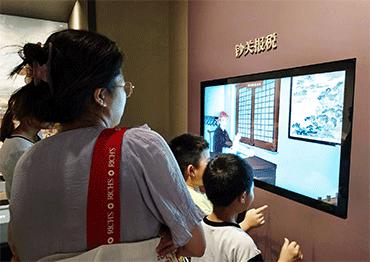According to newly released data from the Ministry of Culture and Tourism, China’s museums saw a record 1.29 billion visits in 2023, almost double the 638 million visitors in 2013. In 2023, 268 new museums opened, bringing the national total to 6,833.
In 2008, the Ministry of Culture and the State Administration of Cultural Heritage (SACH) launched free admission for some museums, seen as the initial impetus for the nationwide museum boom. Within a decade, of the 5,354 museums registered up to 2020, more than 5,000 offered free admission.
According to SACH, during the 2024 Spring Festival(February 10-17), museums nationwide received 73.58 million visits, up 98.6 percent year-on-year. Tickets for popular museums sold out before the holiday, and popular museums extended their opening hours. Shanghai Museum welcomed an average daily 20,000 visitors during the Spring Festival.
This boom continued to the May Day vacation (May 1-5), where heritage sites such as the Sanxingdui Ruins Site in Sichuan Province received 126,652 visitors. SACH said that the country’s over 6,000 museums and 55 national archaeological parks received nearly 40 million visitors during the first three days of the May Day holiday.
Wang Han, a 40-year-old Beijing resident, remembers that in his childhood, museums were old-fashioned and some were quite dilapidated. Now a teacher at Beijing Union University, he said that since the early 2010s, museums have really improved. Much of this is due to increased funding, which allowed museums to upgrade and offer better facilities and exhibits.
“Nowadays, even many county-level museums impress visitors with their rich and valuable collections, as well as modern facilities and designs,” Wang told NewsChina.
Shanxi Museum in Taiyuan, Shanxi Province opened in 1919. Zhao Zhiming, deputy director of the museum, told NewsChina that when he started in 1988, museums played an important role in fulfilling social education, so most visits were organized by schools and government organizations. Museums were impersonal, with largely uniform design. “So you wouldn’t need to visit any museum more than once in a lifetime, as nothing much would change in terms of collections or exhibitions,” Zhao said.
Societal development was the gamechanger. “Low incomes and inconvenient transportation prevented people from visiting museums,” Zhao said. “When travel becomes more convenient, holidays increase, and the public are better educated, people desire more cultural fulfillment, so museums shift from being dull and serious educators toward being a cultural service provider.”
In September 2005, Shanxi Province set up the new provincial museum. It showcases collections of the latest archaeological findings from the province, and makes it easier to view the collections by categorizing them into seven periods according to dates of the dynasties, and five artistic sections. “We put a lot of effort into mapping out the exhibition system to tell a good story for visitors,” Zhao said.
“The museum wants to be more approachable and friendly, so anyone with at least a middle school education can understand the exhibits. Zhao has noticed this allows all visitors to relax and become immersed in the exhibitions.
Yao Xiang, who guides visitors around Shanxi Museum, said that apart from the increase in museumgoers, she finds they are much more knowledgeable now. Many already know what artifacts are, and even what they were used for.

 Old Version
Old Version





